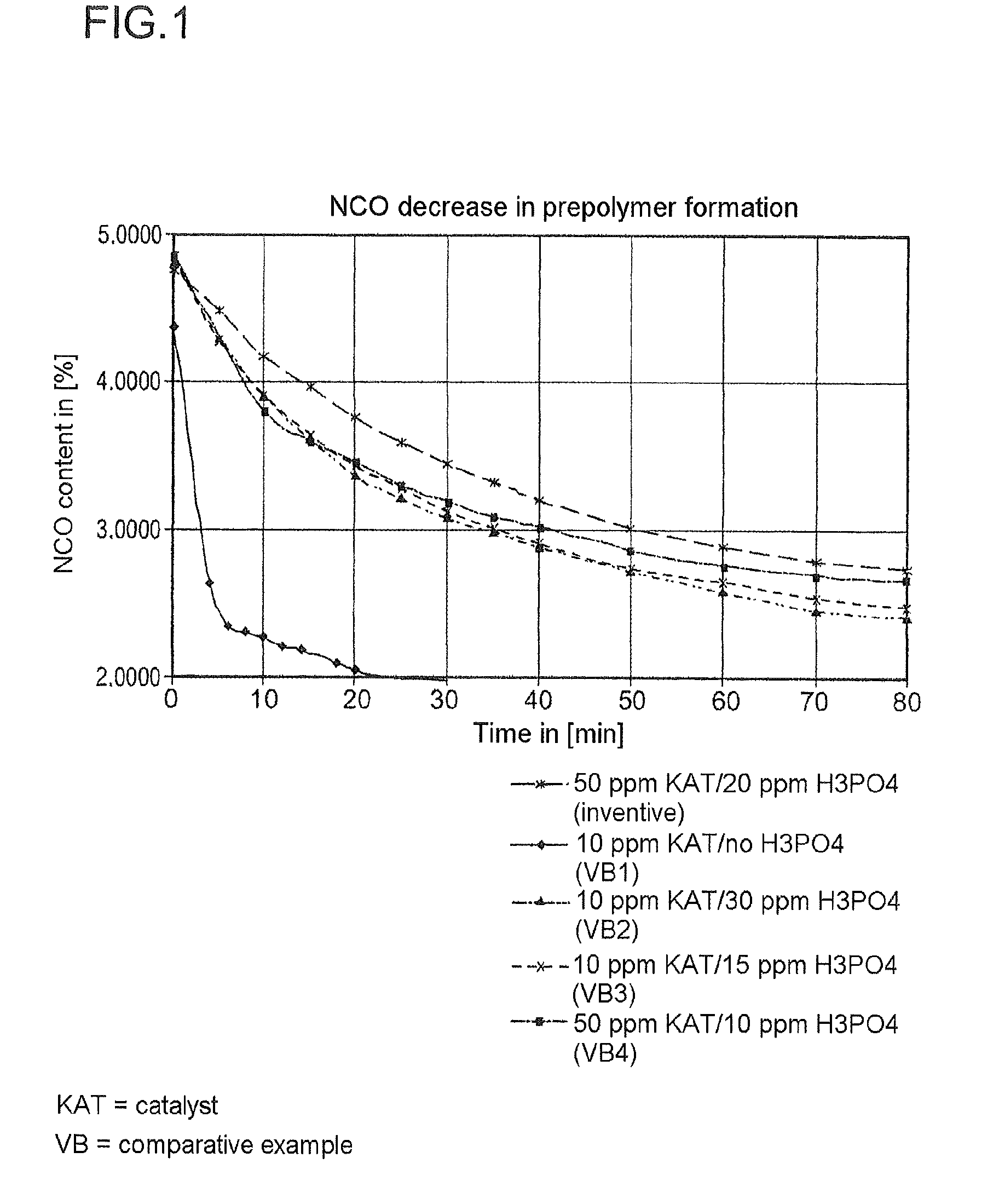Preparing polyester alcohols
a technology of polyester alcohol and alcohol, applied in the field of preparing polyester alcohol, can solve the problems of mixing to heat up above and batch is no longer spinnable, and achieve the effects of high functionality, simple and economical preparation, and high functionality
- Summary
- Abstract
- Description
- Claims
- Application Information
AI Technical Summary
Benefits of technology
Problems solved by technology
Method used
Image
Examples
examples
Molecular Weight Determination
[0031]The average molecular weight Mn in the form of the number average molecular weight, defined as the mass of all PTHF molecules divided by their amount in moles, is determined by determining the hydroxyl number in polytetrahydrofuran. The hydroxyl number is the amount of potassium hydroxide in mg which is equivalent to the amount of acetic acid bound in the course of the acetylation of 1 g of substance. The hydroxyl number is determined via the esterification of the existing hydroxyl groups with an excess of acetic anhydride.
H—[O(CH2)4]n-OH+(CH3CO)2→CH3CO—[O(CH2)4]n-O—COCH3+H2O
[0032]After the reaction, excess acetic anhydride is hydrolyzed with water in accordance with the following reaction equation:
(CH3CO)2O+H2O→2CH3COOH
and backtitrated as acetic acid with potassium hydroxide.
Determination of Viscosity
[0033]Viscosity was determined in accordance with DIN 53019-1 at 60° C. with a Physica MCR101 viscometer (mounted on an air bearing) from Anton Paar...
PUM
| Property | Measurement | Unit |
|---|---|---|
| temperature T1 | aaaaa | aaaaa |
| temperature | aaaaa | aaaaa |
| pressure | aaaaa | aaaaa |
Abstract
Description
Claims
Application Information
 Login to View More
Login to View More - R&D
- Intellectual Property
- Life Sciences
- Materials
- Tech Scout
- Unparalleled Data Quality
- Higher Quality Content
- 60% Fewer Hallucinations
Browse by: Latest US Patents, China's latest patents, Technical Efficacy Thesaurus, Application Domain, Technology Topic, Popular Technical Reports.
© 2025 PatSnap. All rights reserved.Legal|Privacy policy|Modern Slavery Act Transparency Statement|Sitemap|About US| Contact US: help@patsnap.com


